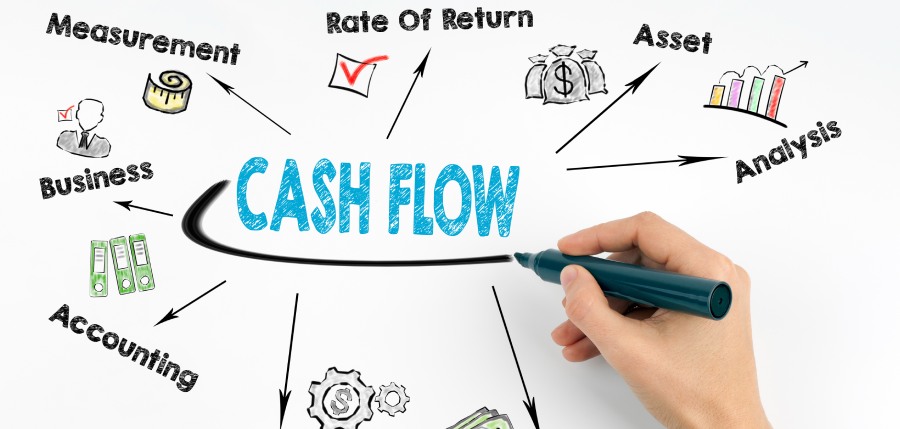
What Is Customer Satisfaction Index
The Customer Satisfaction Index is a powerful tool that gauges how well a company meets or surpasses customer expectations. It provides a quantitative measure of customer satisfaction, helping businesses identify strengths and areas needing improvement. CSI isn’t just about numbers; it’s about understanding your customers deeply and using that insight to drive growth.
The Importance of Customer Satisfaction
Why should you care about customer satisfaction? Simply put, satisfied customers are loyal customers. They are more likely to return, spend more, and recommend your business to others. On the other hand, unhappy customers can harm your reputation and impact your bottom line.
Boosts Customer Loyalty
When customers feel valued, they stay. Loyal customers are the backbone of any business. They not only bring repeat business but also become brand advocates.
Increases Revenue
Happy customers tend to spend more. They are less price-sensitive and more inclined to try new products or services from your business.
Enhances Reputation
Word-of-mouth is powerful. Satisfied customers spread the word about their positive experiences, attracting new customers.
Calculating the Customer Satisfaction Index
Calculating CSI involves several steps. It’s not just about asking, “Are you happy?” It requires a strategic approach to gather meaningful data.
Survey Your Customers
Start with a survey. Ask your customers to rate their satisfaction with various aspects of your business. These could include product quality, customer service, pricing, and overall experience. Use a scale, typically from 1 to 10, where 1 is very dissatisfied and 10 is very satisfied.
Analyse the Data
Once you have the survey results, analyse the data. Calculate the average satisfaction score for each area. This gives you a clear picture of where you excel and where you need improvement.
Create the Index
The Customer Satisfaction Index is typically expressed as a percentage. To calculate it, sum the average satisfaction scores and divide by the highest possible score. Multiply by 100 to get a percentage. This gives you a snapshot of your overall customer satisfaction.
Factors Influencing Customer Satisfaction
Several factors can influence how satisfied your customers are. Understanding these can help you improve your CSI.
Product Quality
High-quality products meet or exceed customer expectations. If your products are reliable and perform as promised, customers are likely to be satisfied.
Customer Service
Exceptional customer service can turn a neutral experience into a positive one. Train your staff to be helpful, courteous, and knowledgeable.
Value for Money
Customers want to feel they are getting their money’s worth. Fair pricing and good value for money can significantly boost satisfaction levels.
Convenience
In today’s fast-paced world, convenience is key. Make it easy for customers to do business with you. Streamline processes and remove any friction points.
Improving Your Customer Satisfaction Index
Improving your CSI requires a proactive approach. Here are some strategies to help you enhance customer satisfaction.
Listen to Your Customers
Actively seek customer feedback and listen to what they have to say. Use surveys, social media, and direct interactions to gather insights.
Train Your Staff
Your employees are the face of your business. Provide them with the training and tools they need to deliver exceptional service.
Address Issues Promptly
When problems arise, address them quickly and efficiently. Show customers that you value their business and are committed to resolving their issues.
Continuously Improve
Customer expectations evolve, and so should your business. Continuously look for ways to improve your products, services, and customer interactions.
The Role of Technology in Customer Satisfaction
Technology can play a significant role in improving customer satisfaction. From CRM systems to customer feedback tools, technology can help you gather and analyze data, streamline processes, and enhance the customer experience.
Customer Relationship Management (CRM)
CRM systems help you manage customer interactions and data. They provide valuable insights into customer behaviour and preferences, allowing you to tailor your approach and improve satisfaction.
Feedback Tools
Use online surveys and feedback tools to gather real-time customer insights. These tools make it easy to collect and analyse data, helping you understand customer needs and expectations.
Automation
Automation can streamline processes, reduce errors, and save time. From automated email responses to chatbots, technology can enhance the customer experience and increase satisfaction.
How Can Customer Satisfaction Be Measured
Customer satisfaction measurement is crucial for several reasons. It helps you understand your customers’ needs, identify areas for improvement, and boost loyalty. Satisfied customers are more likely to become repeat buyers and recommend your business to others. Therefore, measuring customer satisfaction can directly impact your bottom line.
Enhances Customer Retention
When you understand how satisfied your customers are, you can address their concerns and improve their experience. This leads to higher retention rates.
Drives Business Growth
Happy customers spend more and bring new customers through referrals. Measuring satisfaction helps you maintain and increase your customer base.
Informs Business Strategy
Customer feedback provides valuable insights that can shape your business strategy. It helps you make informed decisions about product development, customer service, and marketing.
Methods to Measure Customer Satisfaction
There are several effective methods to measure customer satisfaction. Each method provides unique insights and can be used in combination to get a comprehensive understanding of your customers’ experiences.
Customer Satisfaction Surveys
Surveys are one of the most common methods to measure customer satisfaction. They are versatile and can be tailored to your specific needs.
Designing Effective Surveys
To get valuable feedback, design your surveys with clear, concise questions. Use a mix of question types, such as rating scales, multiple-choice, and open-ended questions. Ensure the survey is not too long to avoid survey fatigue.
Key Survey Questions
- How satisfied are you with our product/service?
- How would you rate your experience with our customer service?
- Would you recommend our company to others?
Net Promoter Score (NPS)
The Net Promoter Score is a popular metric that measures customer loyalty. It’s a simple yet powerful tool.
Calculating NPS
Ask your customers to rate their likelihood of recommending your business on a scale from 0 to 10. Based on their responses, categorize them into Promoters (9-10), Passives (7-8), and Detractors (0-6). Subtract the percentage of Detractors from the percentage of Promoters to get your NPS.
Customer Effort Score (CES)
The Customer Effort Score measures how easy it is for customers to do business with you. It focuses on the effort required to resolve an issue or complete a purchase.
Using CES Effectively
Ask your customers to rate the ease of their interaction on a scale from “Very Difficult” to “Very Easy.” Lower effort scores indicate higher satisfaction and a better customer experience.
Social Media Monitoring
Social media platforms are a goldmine of customer feedback. Monitoring these channels can provide real-time insights into customer satisfaction.
Tools for Social Media Monitoring
Use tools like Hootsuite, Brand watch, or Sprout Social to track mentions, comments, and reviews. Analyse the sentiment of these interactions to gauge overall satisfaction.
Customer Reviews and Testimonials
Online reviews and testimonials offer direct feedback from your customers. They provide qualitative data that can highlight strengths and weaknesses in your products or services.
Encouraging Customer Reviews
Encourage your customers to leave reviews by making it easy and rewarding. Respond to reviews—both positive and negative—to show that you value feedback and are committed to improvement.
Analyzing Customer Satisfaction Data
Once you’ve collected the data, the next step is analysis. This will help you turn raw data into actionable insights.
Quantitative Analysis
Quantitative data from surveys, NPS, and CES can be analysed using statistical methods. Look for trends and patterns in the data to identify areas for improvement.
Key Metrics to Track
- Average satisfaction score
- NPS score
- CES score
- Survey response rate
Qualitative Analysis
Qualitative data from open-ended survey responses, reviews, and social media can provide deeper insights. Use text analysis tools to identify common themes and sentiments.
Combining Data Sources
Combine data from multiple sources for a comprehensive view. This holistic approach helps you understand the full picture of customer satisfaction.
Implementing Improvements Based on Feedback
The ultimate goal of measuring customer satisfaction is to improve it. Use the insights gained from your analysis to make informed decisions and drive improvements.
Prioritizing Actions
Identify the most critical issues affecting customer satisfaction and address them first. Focus on quick wins that can have an immediate impact.
Continuous Improvement
Customer satisfaction measurement is not a one-time task. Continuously gather feedback, analyze data, and implement improvements. This ongoing process ensures that you keep pace with changing customer expectations.
Engaging Your Team
Ensure that all employees understand the importance of customer satisfaction and their role in achieving it. Provide training and resources to help them deliver exceptional customer experiences.
The Role of Technology in Measuring Customer Satisfaction
Technology plays a crucial role in measuring and improving customer satisfaction. From survey tools to advanced analytics, the right technology can streamline the process and provide deeper insights.
Survey Tools
Use online survey tools like SurveyMonkey, Typeform, or Google Forms to create and distribute surveys easily. These tools offer various question types and templates to help you get started.
Analytics Software
Analytics software like Tableau, Power BI, or Google Analytics can help you analyze and visualize customer satisfaction data. These tools make it easier to identify trends and track progress over time.
CRM Systems
Customer Relationship Management (CRM) systems like Salesforce, HubSpot, or Zoho CRM can integrate customer feedback into your overall customer data. This holistic view helps you understand and improve customer satisfaction at every touchpoint.
How Often Should Customer Satisfaction Be Measured
Measuring customer satisfaction isn’t just a one-time task. It’s an ongoing process that provides essential insights into your customers’ experiences and expectations. Regular measurement helps you stay attuned to their needs, identify trends, and make informed decisions.
Staying Ahead of Customer Expectations
Customer expectations evolve. By measuring satisfaction regularly, you can stay ahead of these changes and adjust your strategies accordingly. This proactive approach ensures you meet and exceed customer expectations consistently.
Identifying Trends and Patterns
Regular measurements allow you to spot trends and patterns in customer feedback. Are there recurring issues or common praise points? Understanding these can help you make strategic improvements and capitalize on your strengths.
Enhancing Customer Loyalty
When customers see that their feedback is valued and acted upon, their loyalty increases. Regularly measuring satisfaction shows that you care about their opinions and are committed to improving their experience.
Factors Influencing Measurement Frequency
Several factors influence how often you should measure customer satisfaction. These include your business type, customer interaction frequency, and the specific goals of your satisfaction surveys.
Business Type
Different businesses require different measurement frequencies. For instance, a retail store with frequent customer interactions might benefit from monthly surveys, while a B2B company with longer sales cycles might opt for quarterly or semi-annual measurements.
Customer Interaction Frequency
How often do you interact with your customers? Businesses with frequent touchpoints should measure satisfaction more often to capture timely feedback. Conversely, businesses with infrequent interactions might choose less frequent measurements.
Survey Goals
What do you want to achieve with your surveys? If you’re launching a new product or service, you might need more frequent feedback. For ongoing services, less frequent surveys might suffice to gauge overall satisfaction.
Recommended Frequencies for Measuring Customer Satisfaction
There’s no one-size-fits-all answer, but here are some general guidelines for different types of businesses and customer interactions.
Monthly Surveys
Monthly surveys are ideal for businesses with high customer interaction frequency. Retail stores, e-commerce platforms, and hospitality services benefit from monthly feedback. This frequency helps identify immediate issues and make quick adjustments.
Benefits of Monthly Surveys
- Timely feedback for quick adjustments
- Regular insights into customer trends
- Ability to track changes over short periods
Quarterly Surveys
Quarterly surveys strike a balance between frequent feedback and survey fatigue. They are suitable for most businesses, providing a comprehensive view of customer satisfaction without overwhelming customers.
Benefits of Quarterly Surveys
- Balanced approach to feedback frequency
- Sufficient time to implement and assess changes
- Reduced risk of survey fatigue
Semi-Annual Surveys
For businesses with longer sales cycles or less frequent customer interactions, semi-annual surveys work well. This frequency is common in B2B industries, where customer interactions may be less frequent but more significant.
Benefits of Semi-Annual Surveys
- In-depth insights without frequent disruptions
- Allows time for substantial changes to take effect
- Suitable for long-term customer relationships
Event-Driven Surveys
Event-driven surveys are triggered by specific customer interactions or milestones. Examples include post-purchase surveys, after customer service interactions, or following the completion of a project. These surveys provide immediate feedback on specific experiences.
Benefits of Event-Driven Surveys
- Immediate insights into specific interactions
- Helps address issues promptly
- Enhances customer experience through timely follow-ups
Best Practices for Conducting Customer Satisfaction Surveys
Conducting surveys effectively requires careful planning and execution. Here are some best practices to ensure you get the most out of your customer satisfaction measurements.
Keep Surveys Short and Focused
Long surveys can lead to survey fatigue and lower response rates. Keep your surveys short and focused on key areas of interest. Aim for a balance between gathering enough information and respecting your customers’ time.
Use a Mix of Question Types
Incorporate a variety of question types, such as rating scales, multiple-choice, and open-ended questions. This mix provides a comprehensive view of customer satisfaction and captures detailed feedback.
Analyze and Act on Feedback
Collecting feedback is only the first step. Analyze the data to identify trends and actionable insights. Most importantly, act on the feedback. Show your customers that their opinions matter by making visible improvements.
Communicate Changes to Customers
When you make changes based on customer feedback, communicate these improvements to your customers. This transparency builds trust and reinforces that you value their input.
Leveraging Technology for Effective Measurement
Technology plays a crucial role in measuring customer satisfaction efficiently. Here are some tools and strategies to enhance your measurement efforts.
Survey Tools
Use online survey tools like SurveyMonkey, Type form, or Google Forms to create and distribute surveys easily. These tools offer various templates and analytics to help you gather and analyze data effectively.
CRM Systems
Integrate customer satisfaction surveys with your Customer Relationship Management (CRM) system. This integration provides a holistic view of customer interactions and satisfaction levels, helping you tailor your approach to each customer.
Data Analytics
Utilize data analytics tools to gain deeper insights from survey data. Tools like Tableau, Power BI, or Google Analytics can help you visualize trends and track changes over time.
What Is A Good Customer Satisfaction Score
The Customer Satisfaction Score is a simple yet powerful metric. It measures the percentage of customers who are satisfied with your product, service, or overall experience. Typically, it’s calculated using a single question survey: “How satisfied are you with [our product/service]?” Customers rate their satisfaction on a scale, usually from 1 to 5 or 1 to 10.
How to Calculate CSAT
To calculate CSAT, use the formula:
\[
CSAT = \left( \frac{\text{Number of Satisfied Customers}}{\text{Number of Survey Responses}} \right) \times 100
\]
A customer is considered satisfied if they select the top ratings (e.g., 4 or 5 on a 1-5 scale). This percentage gives you a snapshot of your customer satisfaction at a given point in time.
What Is Considered a Good CSAT?
Determining a “good” CSAT depends on various factors, including industry standards and customer expectations. However, there are general benchmarks to consider.
Industry Benchmarks
Different industries have different benchmarks for what constitutes a good CSAT. Here are a few examples:
– **Retail**: 80-90%
– **E-commerce**: 80-85%
– **Healthcare**: 75-85%
– **Telecommunications**: 70-80%
– **Finance**: 75-85%
These benchmarks provide a general idea, but they can vary widely based on the specific context and customer base.
Customer Expectations
Understanding your customers’ expectations is crucial. A good CSAT score reflects that you are meeting or exceeding these expectations. Regularly collecting feedback and comparing your scores against industry benchmarks and historical data helps you set realistic goals.
Competitive Analysis
Comparing your CSAT with competitors can provide valuable insights. If your score is higher than your competitors, you’re likely doing well. If it’s lower, it may indicate areas needing improvement.
Factors Influencing CSAT
Several factors can influence your Customer Satisfaction Score. Understanding these can help you improve your score and enhance overall customer satisfaction.
Product Quality
The quality of your product or service is a significant factor. High-quality offerings that meet or exceed customer expectations typically result in higher CSAT scores.
Customer Service
Exceptional customer service can significantly boost your CSAT. Customers value prompt, friendly, and effective service. Training your staff to provide top-notch service can make a substantial difference.
Value for Money
Customers want to feel they are getting good value for their money. Competitive pricing and high-quality products contribute to a perception of value, positively impacting your CSAT.
Ease of Use
The ease of using your product or navigating your services affects customer satisfaction. Simplifying processes, improving user interfaces, and reducing friction points can lead to higher CSAT scores.
Improving Your Customer Satisfaction Score
Improving your CSAT requires a proactive and strategic approach. Here are some effective strategies.
Gather Regular Feedback
Regularly gather customer feedback through surveys, social media, and direct interactions. This ongoing dialogue helps you stay attuned to customer needs and make timely adjustments.
Analyse and Act on Feedback
Collecting feedback is just the first step. Analyse the data to identify trends and actionable insights. Implement changes based on this feedback to address issues and enhance the customer experience.
Train Your Staff
Your employees are the frontline of your customer interactions. Providing them with the necessary training and tools to deliver exceptional service is crucial. Emphasize the importance of customer satisfaction in your company culture.
Enhance Product Quality
Continuously work on improving your product or service quality. Listen to customer suggestions and stay ahead of industry trends to ensure your offerings remain competitive and appealing.
Improve Communication
Effective communication with your customers can significantly enhance satisfaction. Keep customers informed about changes, improvements, and new offerings. Address their concerns promptly and transparently.
The Role of Technology in Measuring and Improving CSAT
Technology plays a crucial role in both measuring and improving customer satisfaction. Here are some tools and strategies.
Customer Relationship Management (CRM) Systems
CRM systems like Salesforce, HubSpot, or Zoho CRM help manage customer interactions and feedback. These systems provide valuable insights into customer behavior and preferences, enabling personalized service and improved satisfaction.
Feedback Tools
Use online survey tools like SurveyMonkey, Type form, or Google Forms to create and distribute CSAT surveys. These tools offer various templates and analytics to help you gather and analyze feedback efficiently.
Data Analytics
Advanced analytics tools like Tableau, Power BI, or Google Analytics can help you visualize and interpret customer satisfaction data. These insights enable you to make data-driven decisions and track progress over time.
How Do You Evaluate Customer Satisfaction
Customer satisfaction is a measure of how well your products or services meet or exceed customer expectations. Satisfied customers are more likely to become repeat buyers and recommend your business to others. Therefore, evaluating customer satisfaction is not just about gathering feedback—it’s about understanding your customers deeply and using that knowledge to enhance their experience.
Methods for Evaluating Customer Satisfaction
There are several effective methods to evaluate customer satisfaction. Each method provides unique insights, and using a combination of these can give you a comprehensive understanding.
Customer Satisfaction Surveys
Surveys are one of the most direct and effective ways to gather customer feedback. They can be tailored to your specific needs and are easy to distribute.
Designing Effective Surveys
To design effective surveys, keep questions clear and concise. Use a mix of question types, including rating scales, multiple-choice, and open-ended questions. This variety helps capture detailed feedback and avoids survey fatigue.
Key Survey Questions
- How satisfied are you with our product/service?
- How would you rate your experience with our customer service?
- Would you recommend our company to others?
- What can we do to improve your experience?
Net Promoter Score (NPS)
The Net Promoter Score is a popular metric that measures customer loyalty. It is calculated based on the response to a single question: “On a scale of 0-10, how likely are you to recommend our company to a friend or colleague?”
Calculating NPS
Respondents are categorized as Promoters (9-10), Passives (7-8), or Detractors (0-6). Subtract the percentage of Detractors from the percentage of Promoters to get your NPS. A higher NPS indicates greater customer loyalty and satisfaction.
Customer Effort Score (CES)
The Customer Effort Score measures how easy it is for customers to do business with you. It focuses on the effort required to resolve an issue or complete a purchase.
Using CES Effectively
Ask customers to rate the ease of their interaction on a scale from “Very Difficult” to “Very Easy.” Lower effort scores indicate higher satisfaction, as customers prefer easy and seamless experiences.
Social Media Monitoring
Social media platforms are a rich source of customer feedback. Monitoring these channels can provide real-time insights into customer satisfaction and sentiment.
Tools for Social Media Monitoring
Use tools like Hootsuite, Brand watch, or Sprout Social to track mentions, comments, and reviews. Analyze the sentiment of these interactions to gauge overall satisfaction.
Customer Reviews and Testimonials
Online reviews and testimonials offer direct feedback from your customers. They provide qualitative data that can highlight strengths and areas for improvement.
Encouraging Customer Reviews
Encourage customers to leave reviews by making the process easy and rewarding. Respond to reviews—both positive and negative—to show that you value feedback and are committed to improvement.
Analyzing Customer Satisfaction Data
Collecting data is only the first step. Analyzing it effectively can provide actionable insights that drive improvements.
Quantitative Analysis
Quantitative data from surveys, NPS, and CES can be analysed using statistical methods. Look for trends, patterns, and correlations to identify areas needing attention.
Key Metrics to Track
- Average satisfaction score
- NPS score
- CES score
- Survey response rate
Qualitative Analysis
Qualitative data from open-ended survey responses, reviews, and social media interactions can provide deeper insights. Use text analysis tools to identify common themes and sentiments.
Combining Data Sources
Combining data from multiple sources provides a holistic view of customer satisfaction. This comprehensive approach helps you understand the full picture and make informed decisions.
Best Practices for Evaluating Customer Satisfaction
To get the most out of your customer satisfaction evaluations, follow these best practices.
Keep Surveys Short and Focused
Long surveys can lead to survey fatigue and lower response rates. Keep surveys short and focused on key areas to gather meaningful feedback.
Use a Mix of Question Types
Incorporate a variety of question types in your surveys. This helps capture a broad range of feedback and keeps respondents engaged.
Act on Feedback
Collecting feedback is only valuable if you act on it. Use the insights gained to make improvements and address customer concerns promptly.
Communicate Changes to Customers
When you make changes based on customer feedback, communicate these improvements to your customers. This transparency builds trust and shows that you value their input.
Continuously Evaluate
Customer satisfaction is not a one-time task. Continuously evaluate and gather feedback to stay attuned to changing customer needs and expectations.
Leveraging Technology for Customer Satisfaction Evaluation
Technology plays a crucial role in evaluating customer satisfaction effectively. Here are some tools and strategies to enhance your efforts.
Survey Tools
Use online survey tools like SurveyMonkey, Typeform, or Google Forms to create and distribute surveys easily. These tools offer various templates and analytics to help you gather and analyze feedback.
CRM Systems
Customer Relationship Management (CRM) systems like Salesforce, HubSpot, or Zoho CRM can integrate customer feedback into your overall customer data. This holistic view helps you understand and improve customer satisfaction at every touchpoint.
Data Analytics
Advanced analytics tools like Tableau, Power BI, or Google Analytics can help you visualize and interpret customer satisfaction data. These insights enable you to make data-driven decisions and track progress over time.
What Is Customer Satisfaction Index – Key Takeaways
- The Customer Satisfaction Index (CSI) gauges how well a company meets or surpasses customer expectations.
- CSI provides a quantitative measure of customer satisfaction, helping businesses identify strengths and areas needing improvement.
- Satisfied customers are loyal and likely to return, spend more, and recommend your business to others.
- Customer satisfaction boosts loyalty increases revenue and enhances reputation through word-of-mouth.
- Calculate CSI by surveying customers, analyzing the data, and expressing the score as a percentage.
- Factors influencing customer satisfaction include product quality, customer service, value for money, and convenience.
- To improve CSI, listen to customers, train your staff, address issues promptly, and continuously seek improvement.
- Technology, such as CRM systems and feedback tools, can enhance customer satisfaction measurement and analysis.
- Regular measurement of customer satisfaction helps businesses stay attuned to customer needs and identify trends.
- Effective customer satisfaction surveys should be short, focused, and use a mix of question types.
- Act on feedback by analyzing data, implementing improvements, and communicating changes to customers.
- Continuous evaluation and leveraging technology are crucial for maintaining and improving customer satisfaction.
What Is Customer Satisfaction Index – FAQ
Q. What is the Customer Satisfaction Index (CSI)?
The Customer Satisfaction Index (CSI) is a metric used to measure how well a company meets or exceeds customer expectations. It provides a quantitative assessment of customer satisfaction, helping businesses identify strengths and areas needing improvement.
Q. How is the Customer Satisfaction Index calculated?
To calculate CSI, you survey customers to rate their satisfaction with various aspects of your business. Then, sum the average satisfaction scores and divide by the highest possible score. Multiply by 100 to get a percentage representing overall customer satisfaction.
Q. Why is the Customer Satisfaction Index important for businesses?
The CSI is crucial for businesses as it helps gauge customer loyalty and satisfaction. High CSI scores indicate satisfied customers who are more likely to return, spend more, and recommend your business, thus driving revenue and growth.
Q. What factors influence the Customer Satisfaction Index?
Several factors influence CSI, including product quality, customer service, value for money, and convenience. High-quality products and exceptional service typically lead to higher satisfaction scores, while poor experiences can negatively impact the CSI.
Q. How can businesses improve their Customer Satisfaction Index?
Businesses can improve their CSI by actively seeking and acting on customer feedback, training staff to deliver exceptional service, addressing issues promptly, and continuously enhancing products and services. Using technology like CRM systems and feedback tools can also streamline the improvement process.
Search
Categories
Related Articles

What Is Cash Flow Management In Business
Cash flow management is the lifeblood of any business, large or small. It’s the art of balancing the money coming in with the money going out, ensuring that a business can meet its obligations and thrive. Mastering cash flow management empowers companies not only to survive but to strategically plan for future growth. Let’s dive…
Read More
What Is Stress And Stress Management
In the modern world, stress has become a constant companion for many of us. It infiltrates our daily lives, impacting our health, relationships, and overall well-being. Understanding stress and learning how to manage it can transform how we experience life’s challenges, leading to a more balanced and fulfilling existence. Understanding Stress Stress is the body’s…
Read More
How To Manage Stress Management
Stress is a constant companion in our fast-paced world. It can affect our health, relationships, and overall quality of life. However, understanding and managing stress can transform how we experience daily challenges. This article explores practical strategies for stress management, guiding you towards a calmer, more balanced life. Understanding Stress Stress is the body’s response…
Read More
Why Stress Management Is Important
In the intricate dance of life, where numerous demands tug at our attention, the importance of managing stress cannot be overstated. It is the silent undercurrent that can dictate the quality of our days and the tranquillity of our minds. Understanding the depth of stress management’s impact can enlighten and empower us to lead more…
Read More
What Are The Benefits Of Stress Management
In our brisk and often bustling lives, stress management is not merely a practice but a necessity. Understanding and harnessing the profound benefits of stress management can transform our daily experiences, leading to a richer, more fulfilling life. This article delves into the essential advantages of managing stress effectively and provides insights into how it…
Read More
What Does The Bible Say About Stress Management
In our journey through life, stress is an inevitable companion. It can cloud our days and unsettle our nights. Yet, the ancient texts of the Bible offer a wealth of wisdom on managing stress, urging us to find peace and strength beyond our earthly troubles. This article explores the biblical perspective on stress management, offering…
Read More




